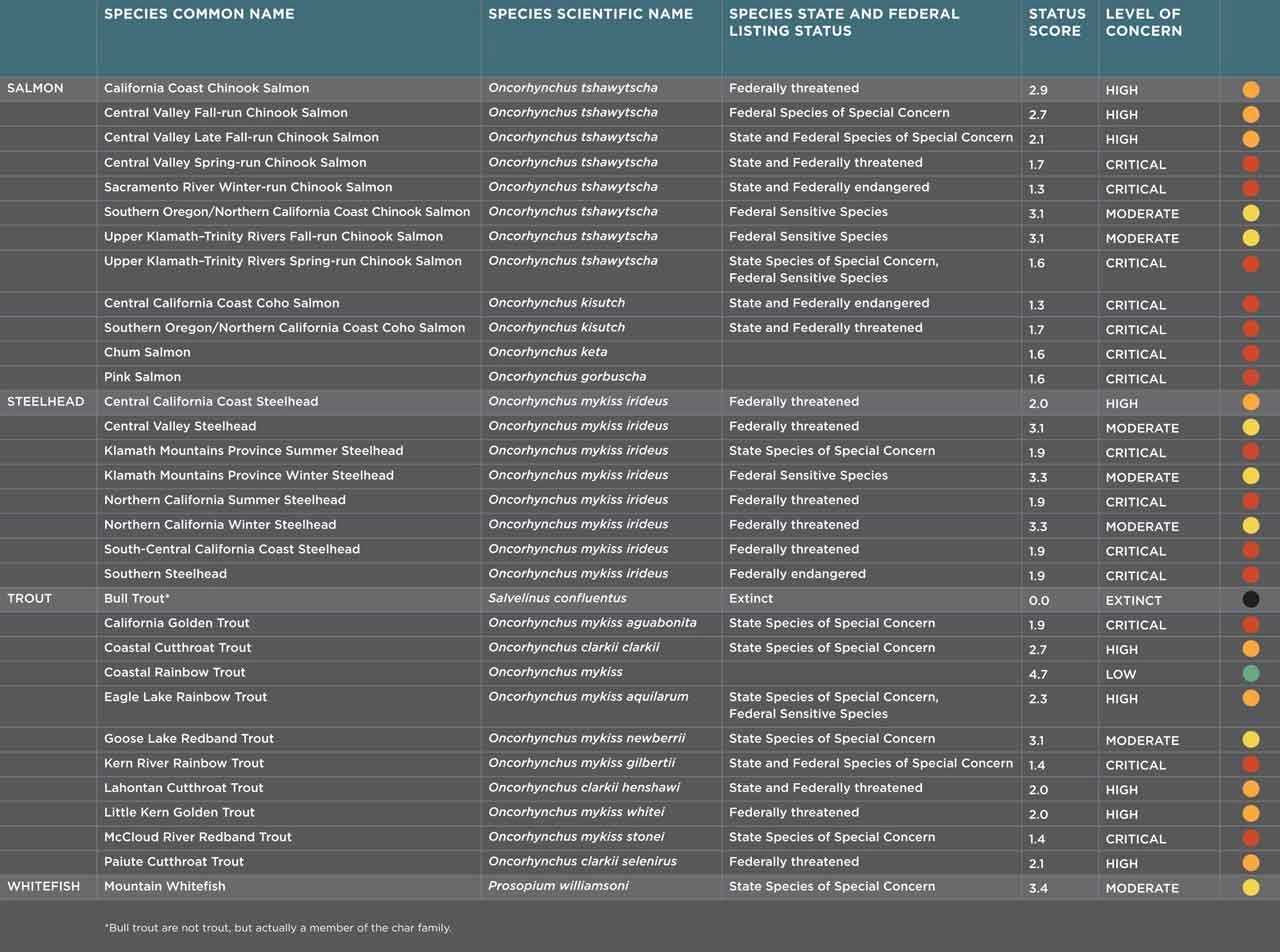South Coast Region
Interactive Project Map
Regional Goal
Leverage CalTrout’s sustained presence in SoCal to increase awareness of state water issues amongst Southern California legislators, establish legal precedent on important statewide fish and water issues, establish CalTrout as a leader on state/local fish and water issues, and empower local groups to restore Southern steelhead habitat. Select a dot on the map to learn about each of our initiatives and their projects in this regions.Projects in the South Coast Region
Restore Estuaries
Aquatic Species Assessment Tool (ASAT)
The Aquatic Species Assessment Tool (ASAT) will provide an integrated quantitative framework for assessing the impact of management actions on salmonids and other sensitive listed fish species that...
Learn MoreReconnect Habitat
Harvey Diversion Fish Passage
Restore passive fish passage at this location and stabilize sediment transport through this reach.
Learn MoreReconnect Habitat
Highway 76 – Pauma Creek Fish Passage
Remove the only total fish passage barrier between a robust rainbow trout population in Pauma Creek and the Pacific ocean.
Learn MoreReconnect Habitat
I-5 Trabuco Creek Fish Passage Project
Enable steelhead passage through this total barrier at the Interstate 5 bridge array on Trabuco Creek and provide access to 15 miles of upstream high quality spawning and rearing habitat. Trabuco...
Learn MoreReconnect Habitat
Malibu Creek Ecosystem Restoration Project
Remove the defunct Rindge Dam location in Malibu Creek canyon. ...
Learn MoreReconnect Habitat
Matilija Dam Removal
Support the Matilija Coalition, Ventura County Watershed Protection District and U.S. Army Corps of Engineers in securing funding to finalize a dam removal design and associated re-evaluation of...
Learn MoreProtect the Best
Native Rainbow Trout Refugia Mapping
To prepare a list of ground-truthed refugia habitat locations for trout relocated after wildfire and during large So Cal fish passage projects.
Learn MoreProtect the Best
Native Rainbow Trout Subpopulation Expansion Plan
The management of non-native aquatic species addressees a major threat to the survival of native trout. Management is arduous and expensive, but worth the long-term investment to clear prime habitat...
Learn MoreProtect the Best
Rose Valley Creek Stream Restoration Project
To develop an alternative analysis for the restoration of Southern California steelhead in the Rose Valley Lakes System and Sespe Creek Watershed.
Learn MoreProtect the Best
San Mateo Creek Non-Native Removal
The goal of this project is to remove non-native species that are detrimental to native trout survival in San Mateo Creek, in federally designated critical habitat for endangered Southern California...
Learn MoreReconnect Habitat
Santa Clara River Floodplain Restoration
Restoration of floodplain processes by focusing on the removal of non-native, invasive plants and revegetation with native species to reestablish critical habitat for sensitive species and riparian...
Learn MoreIntegrate Wild Fish & Working Landscapes
Santa Margarita Ecological Reserve Steelhead Habitat Improvement
This project will improve steelhead habitat in the Santa Margarita River through non-native aquatic species removal, invasive vegetation removal and sediment reduction.
Learn MoreReconnect Habitat
Santa Margarita River – Sandia Creek Fish Passage
Remove a high priority fish passage barrier, improve trail user experience and safety, protect the public from flood impacts, and increase the quality of riparian and river habitat for multiple...
Learn MoreIntegrate Wild Fish & Working Landscapes
Southern Steelhead Coalition
The Coalition’s goal is to increase the pace, scale, and scope of watershed restoration projects leading to resilient Southern steelhead populations in
Integrate Wild Fish & Working Landscapes
Southern Steelhead Coalitions
CalTrout leads two Southern California steelhead coalitions with the goal to increase the pace, scale, and scope of watershed restoration projects leading to resilient Southern steelhead populations...
Learn MoreProtect the Best
WF San Luis Rey Native Trout Protection
The goal of this project is to protect one of the last and most southern native rainbow trout populations of steelhead lineage in Pacific coast of United States.
Learn More















 Dams block access to historical spawning and rearing habitats. Downstream, dams alter the timing, frequency, duration, magnitude, and rate of change of flows decreasing habitat quality and survival.
Dams block access to historical spawning and rearing habitats. Downstream, dams alter the timing, frequency, duration, magnitude, and rate of change of flows decreasing habitat quality and survival.